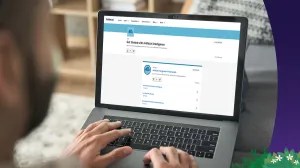The workplace is continuously evolving — and never more so than in the past few years. Traditional ideas about work have been transformed — flexible schedules have replaced 9-to-5 workdays, and hybrid work has replaced five days in the office. But there is no one-size-fits-all approach when it comes to work. In order to be successful, we must take into account the unique needs of each team and the jobs to be done.
At Salesforce, we’ve reignited our high performance culture to unlock new levels of productivity and drive greater customer success. One of the key ways we’re doing this is through our Return & Remote guidelines, which leverage the best of what we’ve learned about how work gets done and our incredible offices around the world to drive deeper collaboration, continuous coaching, peer mentoring, and employee enablement.
Our Return & Remote approach empowers leaders to make decisions for their teams about how and where they work, using the following guidelines:
- Office-flexible: Office-flexible teams are assigned to an office location, and work in-person three days per week – whether in the office, meeting with customers or partners, or attending events.
- Customer-facing: Customer-facing teams are in-person with each other or their customers four days per week.
- Technical: Product and engineering teams are in-person together 10 days per quarter for product releases, team-building, and collaboration.
- Remote: Remote employees are not assigned to an office and remote status is agreed upon with the employee’s manager.
We trust our leaders to know their business and their people — including which jobs need to be done in the office or remotely — and make decisions for their teams accordingly. Some teams, like our engineers, need to come together for longer periods each quarter for scrums and product launches. On the other hand, customer-facing teams like Sales benefit from being in-person with each other and with customers most days of the week. Since we first introduced these guidelines in February 2023, office attendance is up more than 40% globally.
We’ve also learned that not all jobs require an office. If that’s the case, employees can work with their leadership to switch to full-time remote work. Historically, about 18% of our employees have worked remotely, and today, that number has increased to 27% — and rising — as we continue to innovate around how and where we work.
The result is a win-win — employees can continue to lead with flexibility, and leaders can increase efficiency and productivity.
As we move forward, we will continue to listen, learn, and iterate together to ensure our employees — and ultimately our customers — are successful.



















